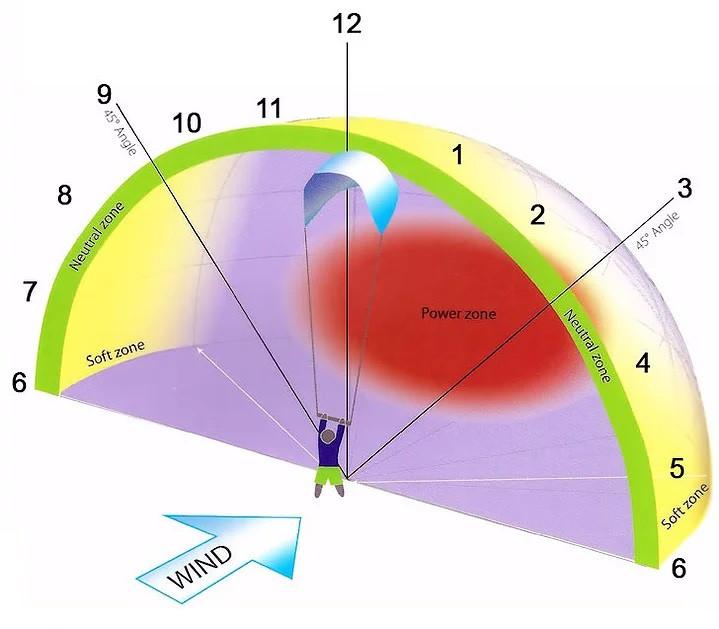
The Kiteboarding Wind Window
Share
In this article we will eliminate any confusion about what the wind window is and what it is not. Understanding this will allow you give you an advantage as we progress into more complex kite maneuvers.
The Wind What?
The wind window is the usable area that your kiteboarding kite can fly. It is shaped like a quarter sphere. The size of the wind window is determined by the length of line between the bar and the kite.
Living on the edge!
It is important to understand that the kite has the least amount of power at the edge of the wind window and that the pull of the kite exponentially increases as the kite is flown into the power zone.
Important tip:
The kite should be at the edge of the window the majority of the time, i.e. Launching, Landing, Standing on the beach, Relaunching the kite, and any other time you don't want to it to pull it should be in the Neutral zone shown in the image below.

Do you know what time it is?
The edge of the wind window is labeled with numbers similar to a clock face. These numbers allow the kiteboarders to easily define where the kite is in the window or where the kite should be traveling to.
What's Zenith?
12 o'clock is the also know as the neutral position or zenith. The kite will produce the least amount of pull in this position because the least amount of sail is being shown to the wind. The numbers increase as the kite moves towards the right hemisphere of the wind window, from 1 - 6 o'clock and decrease as the kite moves into the left hemisphere, from 11 - 6 o’clock.
Don't forget your 45's...
The 3 o'clock position is noteworthy because this is at a 45 degree angle. The kite should at a 45 degree angle when walking upwind with the kite, walking to the water from the beach, or while riding. 6 o'clock is the horizon to the right or the left of the kiter. This is the position in which a kiteboarding kite can be launched, landed, or relaunched from the water.
Got it?!....
Understanding these numbers and and the wind window entirely will give you a firm understanding of where your kite is in relation to the wind. This will aid in your precision and ignite your progress. We will touch base more on the this as we progress into powerstrokes, transitions, jumping, and freestyle maneuvers.
Next Step:
Now that you know the usable area in which the kite flies, let's get this thing in the air.
